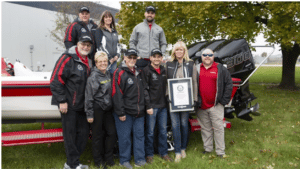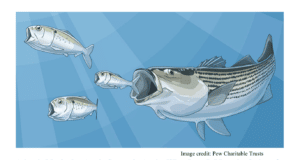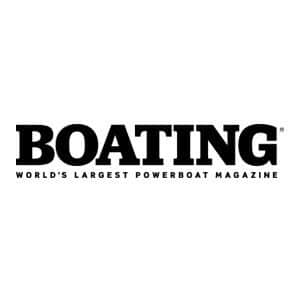The last time you “hit the head” you were probably roughhousing with your kids in the living room. And it’s doubtful you’ve ever worn a pair of gloves while “driving” your boat, much less placed them in a small compartment in front of the passenger. Yet we continue to use terms that have little relevance in today’s world. Here are a few terms in need of an extreme verbal makeover.
A. Old Term: Cocktail Table
Origin: Variations abound, but our favorite comes from New Orleans, where a pharmacist named Peychaud used a French egg cup to serve a mixed brandy drink. The drink was coined coquetier (French for “egg cup”). Peychaud’s guests shortened it to “cocktay,” which evolved to cocktail.
New Term: Beverage table. Heineken, Pepsi and bottles of water are more relevant.
B. Old Term: Head
Origin: The original term, spoken as early as 1485, referred to the bow. In 1708, it made print in A Cruising Voyage Around the World. The tie-in? An early sailor’s “relief valve” was typically placed at the head of the ship near the base of the bowsprit, where splashing seawater cleaned the area.
New Term: We’re no longer hanging over the side to do the duty, so it only makes sense to call the head a toilet. But install it in the head, a room with a floor and sometimes a door. It makes a more appealing visual than an open seawater bidet.
C. Old Term: Glove Box
Origin: Considered necessary accessories in early cars (many without a roof), gloves prevented cold air from numbing drivers’ fingers. When idle, gloves were placed in a compartment called the “glove box.” The automotive term extended to boats.
New Term: Personal storage. It’s used for iPods, cell phones, silly bands and half pints. Not gloves.
D. Old Term: Floorboards
**
Origin:** On smaller, open wooden boats up to 20 feet, the floorboards were planks resting atop the floors. These allowed a flat walking surface and kept feet above the water and muck in the bilge. Larger boats had soles of wood, mounted higher on the boat’s sides. In some midsize boats, the cabin sole was actually the floorboards, due to the height limits required to provide headroom.
New Term: The term “sole” is still accurate for describing the walking surface of either cabin or cockpit. The sole can be a separate fiberglass piece glued atop the stringers or a horizontal part integral with the inwales and gunwales.









